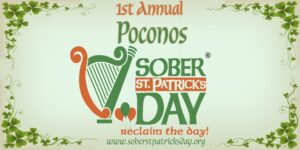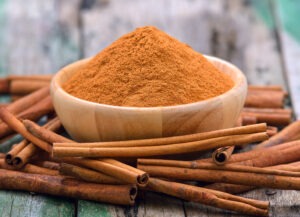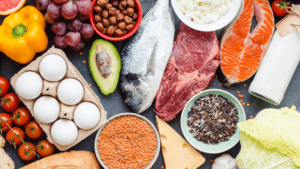Discerning shoppers wander the grocery aisles seeking the best quality for themselves and their family.
From produce to products, the “organic” and “certified organic” labels continue to expand as consumers gravitate toward what they believe are healthier and better options.
But what does the label actually mean? What are the real qualifications, and what are the implications to the quality, to your health and to the well-being of our planet and environment?
The Birth of “Certified Organic”
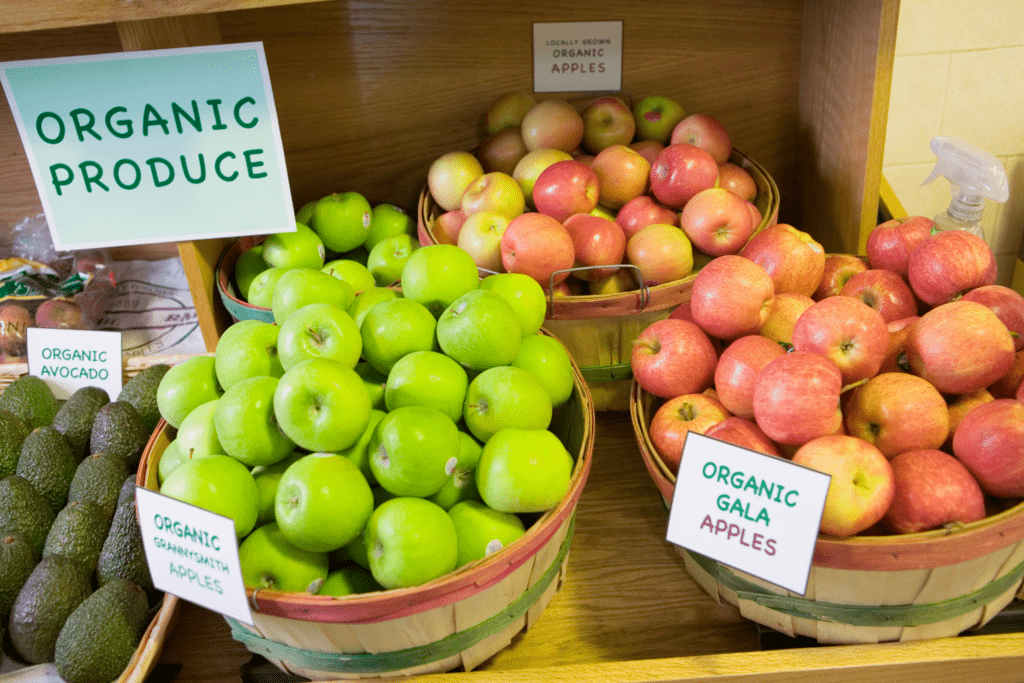
The United States Department of Agriculture (USDA) controls the certification of all organic products, foods, and farms within the United States.1 In order for a farm to label its crops organic it must be certified through the USDA.
But what does “certified” organic actually mean?
Before 1990 there were no regulations for farms and food producers to declare their products as “organic” – anyone could slap the label on their crops and products. The term “organic” had no standardized meaning.
But in 1990 Congress passed the Food, Agriculture, Conservation and Trade Act of 1990 (the 1990 Farm Bill) which established the first certification program for organic agriculture and food through The Organic Foods Production Act of 1990.2
Farmers and food producers could no longer call their crops or products “organic” unless they were certified by the USDA.
The mission of the National Organic Program is simple: to create and put into practice national standards for the use of the word “organic” in food production within the United States. This reassures consumers that the organic foods they are eating meet the strict requirements to be labeled organic.3
By 1995 the National Organic Standards Board provided specific definitions for organic foods and organic agriculture:4
Organic Agriculture is a system of agricultural management practices that use no synthetic or environmentally harmful products in order to maintain the health of the soil and surrounding environment.
While Organic Agricultural practices cannot provide a 100% guarantee of contaminant-free crops, the agricultural practices used are in place to minimize contaminants as much as possible.
Organic Labeling ensures the consumer that the products and produce labeled as “organic” were grown or produced under the strict certification guidelines of the Organic Foods Production Act.
Anyone involved in the production of organic foods (such as producers and processors) also agree to abide by the regulations of organic certification.
Simply put:
The USDA defines the goal of organic agriculture as a method of agriculture or food production that focuses on the health of both the environment and the consumer by using practices with minimal environmental impact and no synthetic inputs.5
What is “Allowed” in Organic Farming Practices?

Modern industrial farming involves the use of a lot of synthetic pesticides and fertilizers as well as genetically modified crops. These agricultural processes degrade the earth, leaving behind a lot of pollutants and draining the soil of its nutrients.
Organic farming seeks to do the opposite by removing the reliance on synthetic pesticides and fertilizers and bringing farming back to its natural roots.
Organic farming has a simple mission: focusing on the health of people, animals, and local
ecosystems.6
PESTICIDES
When consumers think “organic”, usually the first thought is pesticide-free. Many consumers are drawn to organic products as they are aware of how harmful pesticides can be for human and environmental health.
It has always been common knowledge that pesticides have immediate toxicity (ranging from rashes to dizziness and nausea).
But it wasn’t until the 1960s when the public really started to consider the long term, chronic effects of pesticides as well as the environmental impact of large-scale pesticide use.7
In 1962, Rachel Carson wrote Silent Spring in response to the widespread use of the pesticide DDT.8 DDT didn’t target one type of pest but instead killed a range of hundreds of insects, birds and animals with no discrimination.
Carson used a science-backed approach to her writing and in doing so brought the dangers of pesticides to the attention of the public and governing bodies. This eventually led to the banning of DDT and more stringent pesticide regulation.
While the Environmental Protection Agency (EPA) and USDA have worked to reduce the use of pesticides, the US still has over 900 approved pesticides, including 85 of which have been banned in other countries.9
Organic agriculture, however, has a much smaller list of approved, natural pesticides- some of which are harmful for healthy soil. The National List of Allowed and Prohibited Substances is a comprehensive list of what can and cannot be used in organic agriculture and food production.10
While the mission is to remove synthetic products from agriculture, there are indeed some synthetic products on the organic approved list. These products have been extensively studied to ensure they are not harmful to humans or the environment and that there are no suitable non-synthetic alternative options.
FERTILIZERS
Fertilizers have been much less controversial than pesticides, though they can be equally as damaging to the environment. Synthetic fertilizers are usually broken down into a couple concentrated chemical components (such as phosphorus and nitrogen).11 Because there is less organic matter, plants are able to utilize these fertilizers almost immediately.
The problem with inorganic fertilizers is that they cause dangerously high nutrient loads in the environment.12 This process, called eutrophication, happens when the fertilizer runs off the farm due to watering, rains etc. and ends up in natural bodies of water.
These high nutrient loads cause harmful algae blooms, which create large-scale fish kills and dead zones in the waterways by removing available oxygen.
Organic fertilizers, on the other hand, are much less damaging. These fertilizers include a variety of natural products such as manures, bone meal and worm castings.
Organic fertilizers take longer to be available to plants as they do need to be broken down by the soil’s microorganisms first.13 However in doing so they improve soil health by improving the soil’s ability to hold water as well as improving the structure of the soil itself.
In addition to organic alternatives for pesticides and fertilizers, organic agriculture encourages other natural farming methods such as the use of cover crops.
Cover crops are not the cash crop, but are planted after the cash crop has been harvested.14 These crops protect the soil from erosion and weed growth.
Additionally, the plants chosen to be used for cover crops help add nutrients and organic matter back in the soil for the next years’ cash crop.
With consistent use, cover crops increase the yield of the cash crops as much as up to 12%!15
What is Regenerative Agriculture? (and How Does it Differ From Organic?)
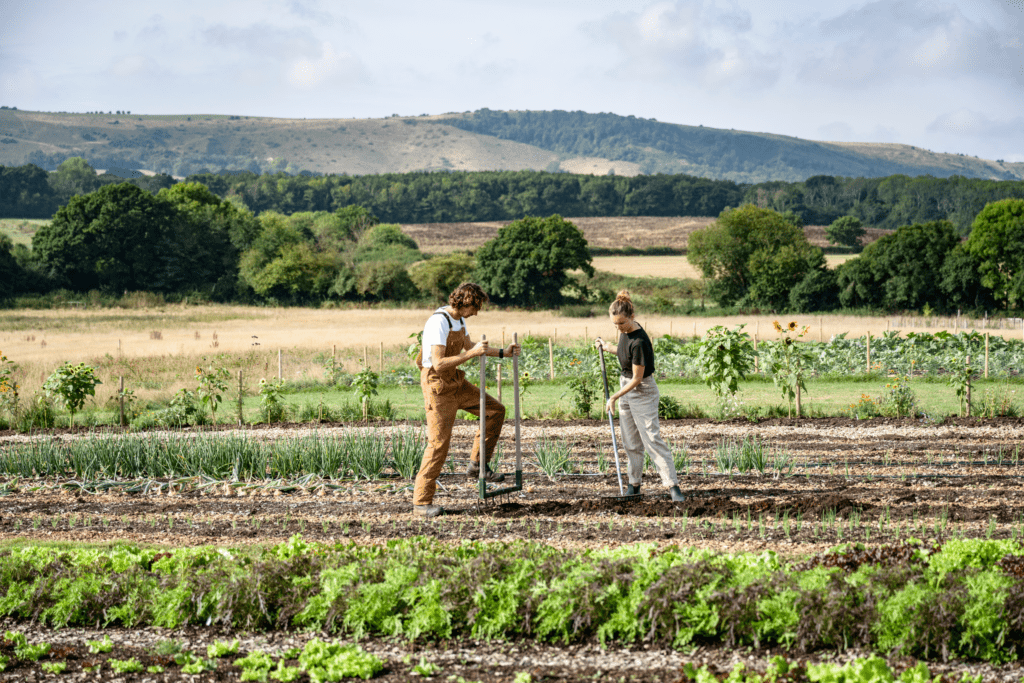
Regenerative agriculture is considered to be farming “in harmony with nature.”16 This approach to agriculture considers how everything (including the local environment) is interconnected.
At its core it doesn’t actually differ that much from certified organic agriculture.
Much like certified organic agriculture, regenerative agriculture seeks to reduce synthetic additives and focus on the health of the soil and surrounding ecosystem.
The biggest difference with regenerative agriculture is a heavy focus on no-till practices.
TILLING VS. NO-TILL
For centuries plowing and/or tilling soil has been a common practice with farmers to prepare the soil for new crops. It’s a means to break up hard packed soil, provide aeration, add fertilizer and organic matter back into the soil, and a method with which to kill weeds.17
However over time, tilling can be quite damaging to the soil health.
Because tilling damages the soil’s structure it reduces its ability to allow water to flow through. This creates a hard, impenetrable crust on top of the soil that really limits the soil’s capacity for holding water, promoting evaporation.18
Frequent tilling also increases soil erosion which reduces the amount of available nutrients for the crops. Over time this reduces the yields of the cash crops and increases the farmer’s costs in labor, water and fertilizers. Most organic farms rely on tilling the soil for weed control. Unfortunately, tillage also kills earthworms and other microorganisms. A lot of farms like Cedar Meadow Farm have begun practicing no-till farming methods.
No-till practices leave the soil’s ecosystem intact and allow for better microbial and fungal activity, which improves soil health.19 This ecosystem within healthy soil is imperative for proper nutrient cycling and for better utilization of organic fertilizers (such as manure and bone meal) that need help being broken down in the soil.
And finally, no-till practices leave the soil structure intact. This allows for better water movement and, more importantly, better water retention and decreased evaporation.20 Overall, not only do no-till practices increase crop yield over time by protecting the soil, but they also reduce the farmer’s costs as well.
Regenerative agriculture also differs from certified organic in that, while farmers gravitate more towards natural and organic methods, some synthetic additives may be used as needed.
The regenerative farmer may have the viewpoint that there is a time and place for everything, and everything in moderation.
For example, small amounts of herbicides may be used for weed control in order to maintain no-till practices effectively.
Herbicides and pesticides can be used safely and in a way where there are no residual compounds in the produce that reaches the consumer.
So, Which is Better?

Farmer Steve Groff’s grandma started farming her produce using the organic methods of the Rodale Institute. Nowadays, the family farm at Cedar Meadow Farm practices sustainable, regenerative agricultural practices.
So, which is best – Certified organic or regenerative agriculture? The answer is: both! They both have their benefits; they are simply just different methods of holistic farming.
Both methods focus on reducing environmental impacts as well as bringing the consumer the best produce available.
It’s up to the farmer and the consumer to determine which is best for their needs… and which best aligns with their personal philosophies.
Sources
- Gold, Mary V. “Organic Production/Organic Food: Information Access Tools.” Natural Agricultural Library: U.S. Department of Agriculture, June 2007, www.nal.usda.gov/legacy/afsic/organic-productionorganic-food-information-access-tools.
- Senate – Agriculture, Nutrition and Forestry. “Food, Agriculture, Conservation and Trade Act of 1990.” Congress, 28 Nov 1990, https://www.congress.gov/bill/101st-congress/senate-bill/2830.
- Environmental Protection Agency. “Organic Farming.” US EPA, 4 Feb. 2022, www.epa.gov/agriculture/organic-farming.
- Gold, Mary V. “Organic Production/Organic Food: Information Access Tools.” Natural Agricultural Library: U.S. Department of Agriculture, June 2007, www.nal.usda.gov/legacy/afsic/organic-productionorganic-food-information-access-tools.
- YouMatter. “What Is Organic Farming? Definition, Standards and Examples.” YouMatter, 5 Feb. 2019, youmatter.world/en/definition/organic-farming-definition-standards-benefits.
- Soil Association. “What Is Organic?” Soil Association, www.soilassociation.org/take-action/organic-living/what-is-organic. Accessed 28 Mar. 2022.
- “Pesticides and Human Health.” Californians For Pesticide Reform, www.pesticidereform.org/pesticides-human-health. Accessed 28 Mar. 2022.
- “The Story of Silent Spring.” NRDC, 13 Aug. 2015, www.nrdc.org/stories/story-silent-spring.
- Donley, Nathan. “The USA Lags Behind Other Agricultural Nations in Banning Harmful Pesticides.” Environmental Health, vol. 18, no. 1, 2019. Crossref, https://doi.org/10.1186/s12940-019-0488-0.
- “The National List of Allowed and Prohibited Substances.” National Archives: Code of Federal Regulations, 23 Mar. 2022, www.ecfr.gov/current/title-7/subtitle-B/chapter-I/subchapter-M/part-205/subpart-G.
- Pokorny, Kym. “Here’s the Scoop on Chemical and Organic Fertilizers.” OSU Extension Service, Oregon State University, Mar. 2015, extension.oregonstate.edu/news/heres-scoop-chemical-organic-fertilizers.
- “What Is Eutrophication?” National Ocean Service: National Oceanic and Atmospheric Administration, U.S. Department of Commerce, oceanservice.noaa.gov/facts/eutrophication.html. Accessed 28 Mar. 2022.
- Pokorny, Kym. “Here’s the Scoop on Chemical and Organic Fertilizers.” OSU Extension Service, Oregon State University, Mar. 2015, extension.oregonstate.edu/news/heres-scoop-chemical-organic-fertilizers.
- “Cover Crops.” Rodale Institute, 12 Oct. 2018, rodaleinstitute.org/why-organic/organic-farming-practices/cover-crops.
- Clark, Andy. “Cover Crops for Sustainable Crop Rotations.” SARE, 2015, www.sare.org/resources/cover-crops.
- NRDC. “Regenerative Agriculture 101.” NRDC, 29 Nov. 2021, www.nrdc.org/stories/regenerative-agriculture-101.
- “Tillage and Cultivation.” Oregon State University: College of Agricultural Sciences, 13 Mar. 2019, agsci.oregonstate.edu/mes/sustainable-onion-production/tillage-and-cultivation.
- Al-Kaisi, Mahdi, et al. “Frequent Tillage and Its Impact on Soil Quality.” Iowa State University: Extension and Outreach, 28 June 2004, crops.extension.iastate.edu/encyclopedia/frequent-tillage-and-its-impact-soil-quality.
- Spears, Stefanie. “What Is No-Till Farming?” Regeneration International, 15 Oct. 2018, regenerationinternational.org/2018/06/24/no-till-farming.
- Spears, Stefanie. “What Is No-Till Farming?” Regeneration International, 15 Oct. 2018, regenerationinternational.org/2018/06/24/no-till-farming.
























